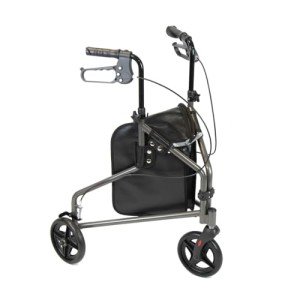See What Seat Walker Tricks The Celebs Are Making Use Of
The Seat Walker: A Comprehensive Guide to Mobility Aids
When it comes to preserving independence and mobility, people with limited mobility or impairments often depend on numerous assistive gadgets. One such device that significantly concerns the forefront of mobility aids is the seat walker. This post supplies a thorough appearance at seat walkers– their functions, benefits, types, and the elements to think about when picking one.
What is a Seat Walker?
A seat walker is a versatile mobility aid created mainly for individuals who might have trouble walking unaided. It normally includes a frame with wheels, manages for support, and a built-in bench or seat, enabling users to take breaks when needed. Unlike standard walkers or rollators, which just provide assistance for walking, the addition of a seat makes the seat walker substantially more functional for numerous users.
Secret Features of Seat Walkers
- Wheels: Most seat walkers are equipped with front wheels that boost mobility and ease of use, enabling users to move smoothly over numerous surface areas.
- Seat or Bench: The most distinguishing function is the integrated seat, which uses a resting place for users when tiredness sets in.
- Handles: Adjustable manages cater to various user heights, offering appropriate assistance and guaranteeing a comfortable grip.
- Brakes: Safety brakes avoid the walker from rolling away when somebody is seated, enhancing user security.
- Lightweight Frame: Many designs are designed to be lightweight, making them easier to transfer and steer.
Benefits of Using a Seat Walker
Seat walkers have various benefits that make them an ideal choice for numerous users.
- Enhanced Mobility: They supply greater stability and assistance than standard walkers, lowering the danger of falls.
- Convenience: The capability to rest at any point makes them suitable for those who tire easily or have actually limited endurance.
- Independence: Seat walkers enable users to maintain a degree of independence by enabling them to walk and rest without assistance.
- Flexibility: Suitable for both indoor and outdoor use, these walkers can adjust to various environments.
- Exercise: Regular use encourages physical activity and social interaction, which can enhance overall well-being.
Kinds Of Seat Walkers
Various kinds of seat walkers cater to the differing requirements of users. Here is a breakdown of the most typical types:
| Type | Features | Best For |
|---|---|---|
| Fundamental Seat Walker | Easy design, often with a lightweight frame and very little features. | Users needing fundamental mobility support. |
| Sturdy Seat Walker | Enhanced frame, higher weight capacity, often with larger seats. | People requiring more robust assistance. |
| Rollator with Seat | Integrates seats with multi-height adjustable deals with and better maneuverability. | Users needing regular resting alternatives. |
| Transport Seat Walker | Created for simple transportation; often folds and has a little footprint. | Active users who travel frequently. |
Selecting the Right Seat Walker
Choosing a seat walker includes several factors to consider to guarantee it satisfies the user’s particular requirements. Here are necessary factors to remember:
- Weight Capacity: Ensure that the seat walker can support the user’s weight conveniently.
- Seat Height: Check the height of the seat to guarantee it is proper and comfortable for the user.
- Width: Consider your home and ensure the walker can fit through doors and narrow passages.
- Wheel Size: Larger wheels can handle rougher surface, while smaller wheels are better suited for indoor use.
- Weight of the Walker: A lightweight walker is advantageous for simple maneuverability and transport.
- Brakes and Safety Features: Look for reliable brakes and safety guarantees, such as stability and anti-tip functions.
Setting a Budget
Seat walkers vary substantially in cost depending on their features and develop quality. While it’s necessary to find a design that meets the user’s needs, it’s equally essential to set a sensible spending plan.

Typical Price Ranges:
- Basic Models: ₤ 50 to ₤ 150
- Rollators with Added Features: ₤ 150 to ₤ 300
- Sturdy Models: ₤ 300 and up
Frequently Asked Questions About Seat Walkers
Q1: Who need to use a seat walker?A1: Seat walkers are perfect for individuals with restricted mobility due to age, injury, or persistent conditions who need extra assistance while walking. Q2: Are seat walkers safe?A2: Yes, seat walkers are created with safety in mind. They typically include brakes, sturdy frames, and slip-resistant grips. Q3: How do I preserve my seat walker?A3: Regularly examine the brakes and wheels for wear and tear.
Tidy the frame with a wet fabric and ensure
screws and parts are tight. Q4: Can seat walkers be used outdoors?A4: Yes, many seat walkers are created for both indoor and outdoor use, though designs with larger wheels carry out better on irregular surfaces. Q5: How do I understand
which seat walker is ideal for me?A5: Consult with a healthcare provider or occupational therapist who can assess your mobility requirements and suggest appropriate choices based on your unique situation. The convenience and flexibility of seat walkers make them an invaluable tool for those with mobility challenges. By using support, stability, and a chance for rest, they empower users to stay active and independent. When picking a seat walker, individuals should consider their individual requirements, way of life, and safety to discover the very best match for them. With the ideal seat walker, lots of users can take pleasure in a restored sense of liberty, improving their quality of life and keeping their independence. In summary, whether one is navigating through the home, running errands, or enjoying fresh air in a park, a seat walker can show to be a crucial buddy, changing everyday activities into manageable jobs.


